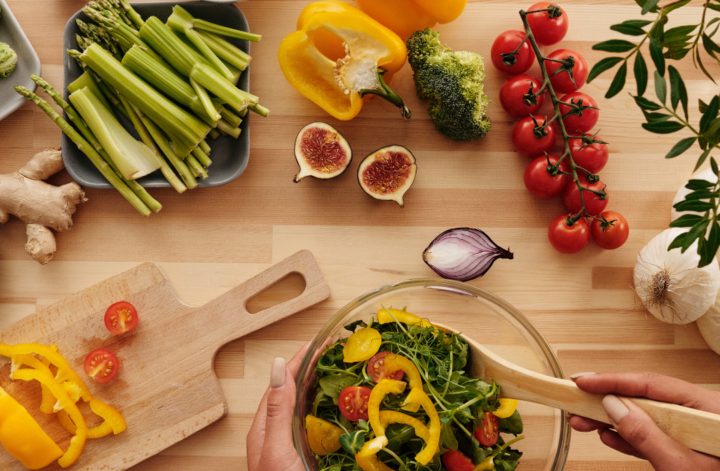Cooking for special diets can feel challenging, but it opens the door to creativity in the kitchen. Many individuals follow specific dietary requirements due to health conditions, allergies, or lifestyle choices. The key to successful cooking for these diets lies in understanding nutritional needs while crafting delicious meals that everyone can enjoy.
Exploring ingredients that cater to gluten-free, vegan, or ketogenic diets does not mean sacrificing flavor. Knowledge of substitutions can enhance meals without compromising health or taste. By focusing on fresh, whole foods tailored to various dietary needs, cooks can create satisfying and balanced dishes.
Navigating special diets requires both awareness and adaptability. With the right approach, cooking can transform meals into nourishing experiences that cater to diverse preferences and requirements. It is possible to delight every palate while adhering to nutritional standards.
Understanding Special Diets
Special diets are tailored eating plans designed to meet specific health needs or preferences. They often involve dietary restrictions that cater to allergies, intolerances, or specific health conditions. A fundamental understanding of these diets is essential for effective meal planning.
Types of Dietary Restrictions
Dietary restrictions can arise from various factors, including health conditions, ethical beliefs, or personal preferences. Some common types include:
- Gluten-Free: Necessary for individuals with celiac disease or gluten intolerance. Foods containing wheat, barley, and rye are avoided.
- Dairy-Free: Essential for those with lactose intolerance or a dairy allergy. This diet excludes milk and all dairy products.
- Vegan: A plant-based diet that eliminates all animal products, often motivated by ethical considerations.
- Paleo: Focuses on whole foods, including lean meats, fish, fruits, and vegetables, while avoiding processed foods, grains, and dairy.
- Ketogenic: High-fat, low-carbohydrate diet aimed at promoting fat utilization for energy.
The Role of Nutrition in Special Diets
Nutrition plays a critical role in special diets to ensure all dietary needs are met. Each type of restriction impacts nutrient intake differently.
Key considerations include:
- Meal Planning: Careful selection of ingredients is crucial for balanced nutrition.
- Nutrient Deficiencies: Restricted diets may lead to deficiencies. For example, vegans might need supplements for Vitamin B12.
- Food Alternatives: Understanding substitutes, like almond milk instead of dairy, helps maintain balanced meals.
- Consultation with Professionals: Engaging a registered dietitian can provide personalized meal plans that ensure nutritional adequacy.
By prioritizing nutrition within the constraints of dietary restrictions, individuals can maintain health and well-being.
Essential Cooking Techniques
Understanding specific cooking techniques is crucial for preparing meals that cater to special diets. Knowledge of baking essentials and everyday cooking practices ensures that food remains safe and delicious.
Baking Essentials for Special Diets
Baking techniques vary significantly based on dietary needs. For gluten-free baking, using alternative flours such as almond, coconut, or oat flour is necessary. These flours require adjustments in recipe measurements to maintain texture and taste.
When making bread, incorporating binders like xanthan gum or psyllium husk can improve structure. It’s essential to monitor baking times, as gluten-free breads often bake faster.
Utilizing recipe resources tailored for special diets can help. This ensures accurate measurements and timing for successful outcomes. Proper equipment, like silicone baking mats or gluten-free pans, can also enhance the baking process.
Everyday Cooking and Handling Practices
In everyday cooking, awareness of cross-contamination is vital. Keeping separate utensils and cutting boards for different food products minimizes risks for those with allergies or intolerances.
Implementing easy cooking techniques can simplify meal preparation. For example, batch cooking and freezing meals allows for quick access to healthy options.
Labeling food storage with clear identifiers helps maintain diet compliance. When cooking, the use of gluten-free or allergen-free ingredients should be prioritized to ensure safety.
Meal planning can also aid in sticking to dietary guidelines and making shopping efficient. Staying organized with meal prep contributes to maintaining a balanced diet.
Meal Planning and Recipes
Meal planning for special diets requires careful consideration of nutritional balance, preferences, and dietary restrictions. This section highlights the essential components of creating meals that cater to vegetarian diets, accommodate food allergies, and meet the needs of college students.
Creating Balanced Vegetarian Meals
Vegetarian meals can be nutritious and satisfying when planned properly. Key nutrients to focus on include:
- Protein Sources: Use beans, lentils, tofu, and quinoa.
- Vitamins and Minerals: Incorporate a variety of vegetables, fruits, nuts, and seeds for essential vitamins like B12 and other minerals.
Sample vegetarian meal ideas include:
- Chickpea Salad: Combine chickpeas, cucumber, bell pepper, and a lemon-tahini dressing.
- Vegetable Stir-Fry: Use a mix of broccoli, carrots, and snap peas with tofu, seasoned finely.
Planning meals in advance ensures a variety of flavors and textures, making vegetarian eating enjoyable.
Allergy-Friendly Options
Cooking for individuals with food allergies requires careful ingredient selection. Common allergens to avoid include:
- Nuts: Use seeds or legumes for protein.
- Dairy: Substitute with almond milk or coconut yogurt.
- Gluten: Opt for gluten-free grains like rice, quinoa, and corn.
Creating meals like:
- Quinoa Salad: Mix quinoa with roasted vegetables and a lemon vinaigrette.
- Coconut Curry: Use coconut milk, vegetables, and chickpeas served over rice.
Always read labels and check for cross-contamination to ensure safety.
Cooking for College Students
College students often seek quick, budget-friendly meals that are still nutritious. Important aspects include:
- Easy Preparation: Focus on recipes that require minimal cooking time.
- Affordable Ingredients: Incorporate pantry staples such as rice, pasta, and frozen vegetables.
Recipes can include:
- One-Pan Pasta: Cook pasta with vegetables and a sauce in one pot.
- Microwave Omelet: Whisk eggs with veggies in a microwave-safe bowl.
This approach allows students to enjoy healthy meals without significant time or financial investment.




